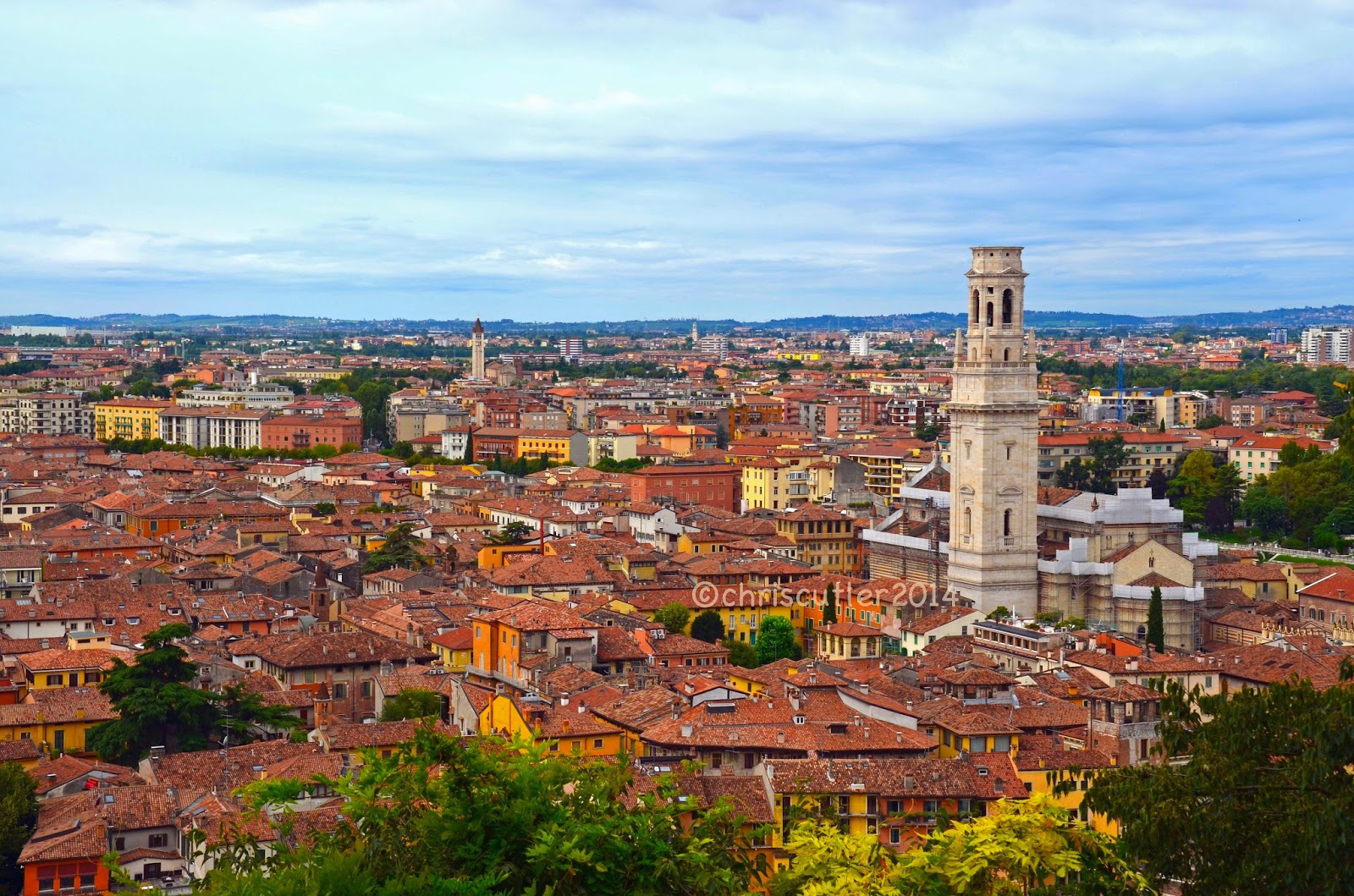 |
| Verona |
“There is no world without Verona walls
but purgatory, torture, hell itself. . .”
~ William Shakespeare
From Romeo & Juliet (Act 3: Scene 3)
Since my internet wasn’t working, I decided to hop a train
to different places this week since the train is pretty inexpensive.
Monday, I headed to Verona. I’d never been although I had
considered staying there instead of Spoleto last year, but the owners of
apartments were less-than-willing to work with me. I spent about 4.5-5 hours
there, which, now that I’ve seen it, was about what I needed. I think that two weeks last year might have
been torture.
Don’t get me wrong. It’s a nice city, but it has a distinctly different
flavor. It’s been around since 500+ BC, falling into Roman hands only in 89
BC. The Visigoths conquered the city, as
did the Ostrogoths (Who knew there were so many Goths?).
Prior to the unification of Italy in the 1860s,
Verona was part of Austria. To make a long story short, they fought battles.
They won. They became part of Italy.
During World War II, it was a stronghold for the Fascist republic. The
Nazis and Mussolini accused Galeazzo Ciano, his son-in-law, and other officers
of plotting against the government, held a trial, and executed them on the
banks of the Adige River, which flows through the city (You can't see it in the photo at the top of this post, but it's there.).
 |
| The Verona Colosseum |
Apparently the Fascists weren’t the only ones to execute
people in Verona. In the middle of the
historic area is an old arena which they used in much the same fashion as the
Romans used the Colosseum back in the day. The interesting thing about the
Verona one is that it’s in pretty good shape, and they still use it today for
concerts and other productions. I guess
if I lived there I’d probably attend things there, but it freaks me out a
little to think about lions and tigers and Christians. (Oh, my. You knew I was going to say that, didn’t
you?)
 |
| Porta Nuova. . . Notice the pink and white marble/granite |
The tragic love story goes back ages, and one is the story of Pyramus and Thisbe from Ovid’s Metamorphoses. (Ovid, by the way, was Abruzzese, born in Sulmona near my grandparents’ village.) Dante, in the Divine Comedy, references the Montecchi and Cappeletti (Montague and Capulets of the English version). There are Italian versions dating more than 100 years before the Shakespearean version, and a Spanish version (by Lope de Vega) written a few years before Shakespeare’s version.
(As a side note, I did a paper on the Lope’s Castelvines y Monteses in grad school. As we know, Shakespeare and most of the other writers have Romeo and Juliet (or whatever names the other authors use) die at the end. The Spanish writers of that period wrote tragicomedies. Part of the play was a tragedy—the warring families, the forbidden love, the apparent deaths of the lovers. However! The hero and heroine live happily ever after—the comedia. Sorry. I get carried away.)
 |
| Juliet's Balcony |
At any rate, I took one of the bus tours around the city because I wanted to see as much as I could while I was there. I got off in a piazza close to Juliet’s house. It does exist, and the Veronese swear the Cappello (Capulets) lived there and that they were at war with another family in town. The house dates to the 13th century, and while the courtyard below the balcony is open (with free admission), visits to the house are not. Apparently the government closed the house to tourists because of the wear-and-tear on it.
 |
| The locks on the gate at Juliet's House. |
 |
| The gum on the walls of the courtyard at Juliet's House |
and on the portico walls (BANDAGES WITH NAMES AND DATES INSCRIBED—GAG, BLECH, and GET A LIFE, PEOPLE!).
 |
| The bandages in the portico at Juliet's House |
The director of the language school I attended took me out
for coffee this morning just to chat (I understood about 90% of what he
said. YAY!), and I told him about my trip
to Verona and about how I had a bit of a hard time understanding their Italian.
He told me that because of the German influence in that dialect, they tend to
be hard to understand to someone not familiar with it. It makes sense, and it's now a story in the book.
As a final note, I did note a bit of German influence in
restaurants and restaurant offerings. If
you note the photo below, you’ll see “cheese” pizza that I didn’t eat for lunch
(for good reason).
 |
| Munster, bleu, German white, & some other cheese pizza. |
Actually, I came home and made salad with chicken. It was
safe.
 |
| A German restaurant in Verona |

The lock idea has finally come to Youngstown - they are encouraging people to put locks on a giant rooster sculpture at the Canfield Fair this weekend!
ReplyDelete